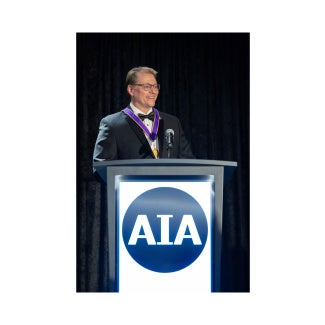AIA study examines impact of student debt on profession
An AIA study shows underrepresented architect demographic groups are disproportionally impacted by student loan debt.

WASHINGTON, D.C. – Dec. 6, 2022 – The American Institute of Architects (AIA) commissioned a study that examines student loan debt to gain a better understanding of how these challenges affect the profession and different architect demographic groups.
The study examines the ways in which student loan debt impacts architects, from jobs taken to life choices made. Global market research company Ipsos was commissioned to conduct the study, which included over 700 AIA member interviews.
“This data provides critical insight into how student debt is harming the profession,” said AIA EVP/Chief Executive Officer Lakisha Ann Woods, CAE. “Through a better understanding of how debt impacts different demographic groups among our membership, this data will help us break barriers to the profession that disproportionately impact Black, Indigenous, and people of color. Our goal is to propel all architects to new professional heights.”
Key findings of the student debt study include:
- Student loan debt affects AIA members and their life choices in fundamental ways, but the impact differs greatly by age and somewhat by gender and ethnicity. Whether somebody was a first-generation student also plays a role.
- Three in four AIA members (73 percent) had to borrow money to pay for college, and of those who did, a large majority took out federal loans (87 percent).
- Younger design professionals are most burdened by debt—89 percent of AIA members under 35 reported taking out loans, compared to 66 percent of those between 55 and 64 (86 percent and 75 percent of members 35-44 and 45-54, respectively, also reported taking out loans). Since underrepresented members are significantly younger than their white male counterparts, they are bearing higher debt burdens.
- First-Generation students were significantly more likely to borrow compared to those with college experience in the family (78 percent vs. 71 percent).
- While age was the most highly correlated with borrowing, across age cohorts, underrepresented students reported significantly higher borrowing amounts.
As a result, different groups of members report making different life choices, related to their level of debt.
- While fewer than one in three AIA members report student debt impacted their choice of firm (29 percent), nearly half of those who are still paying off loans today reported it did (47 percent), and female members are nearly twice as likely to report such an impact than their male peers (44 percent vs. 23 percent).
- When it comes to choosing where to live, the impact of debt was slightly larger (40 percent overall), but again it mattered significantly more to those still paying back loans compared to those paid off (57 percent vs. 29 percent); and results also differed by gender (59 percent female vs. 33 percent male).
Almost half of AIA members who borrowed money for college have considered leaving architecture or have already done so (44 percent).
- Changing to a related field is the most common idea. One in five members with loans have considered it or already done so (22 percent).
- Female members are significantly more likely to have thought about leaving than males (57 percent vs. 39 percent), and the same is seen for members still paying off loans compared to those fully paid (57 percent vs. 36 percent).
Learn more about AIA's advocacy efforts.
About AIA
Founded in 1857, AIA consistently works to create more valuable, healthy, secure, and sustainable buildings, neighborhoods, and communities. Through more than 200 international, state and local chapters, AIA advocates for public policies that promote economic vitality and public wellbeing.
AIA provides members with tools and resources to assist them in their careers and business as well as engaging civic and government leaders and the public to find solutions to pressing issues facing our communities, institutions, nation, and world. Members adhere to a code of ethics and conduct to ensure the highest professional standards.
Contact
Matt Tinder
(202) 626 7462
Explore AIA press releases and digital content on the AEC industry.
Complete our form to submit a press inquiry or speaking request.
Sign up to receive AIA press announcements via email.
Follow AIA media relations on X.



